Overview
Linux KVM, Kernel-based Virtual Machine (KVM) is an open-source virtualization technology built into Linux.
Specifically, with KVM, you can turn Linux into a hypervisor. This allows the host machine to run multiple independent virtualized environments, called guests or virtual machines (VMs).
Features
- Optimized open source hypervisor
- Simplify management with Oracle Linux Virtualization Manager
- Designed for hybrid cloud
- Easily migrate VMs to the cloud
- Security updates without rebooting
- Hard partitioning of Oracle software
Basic functions
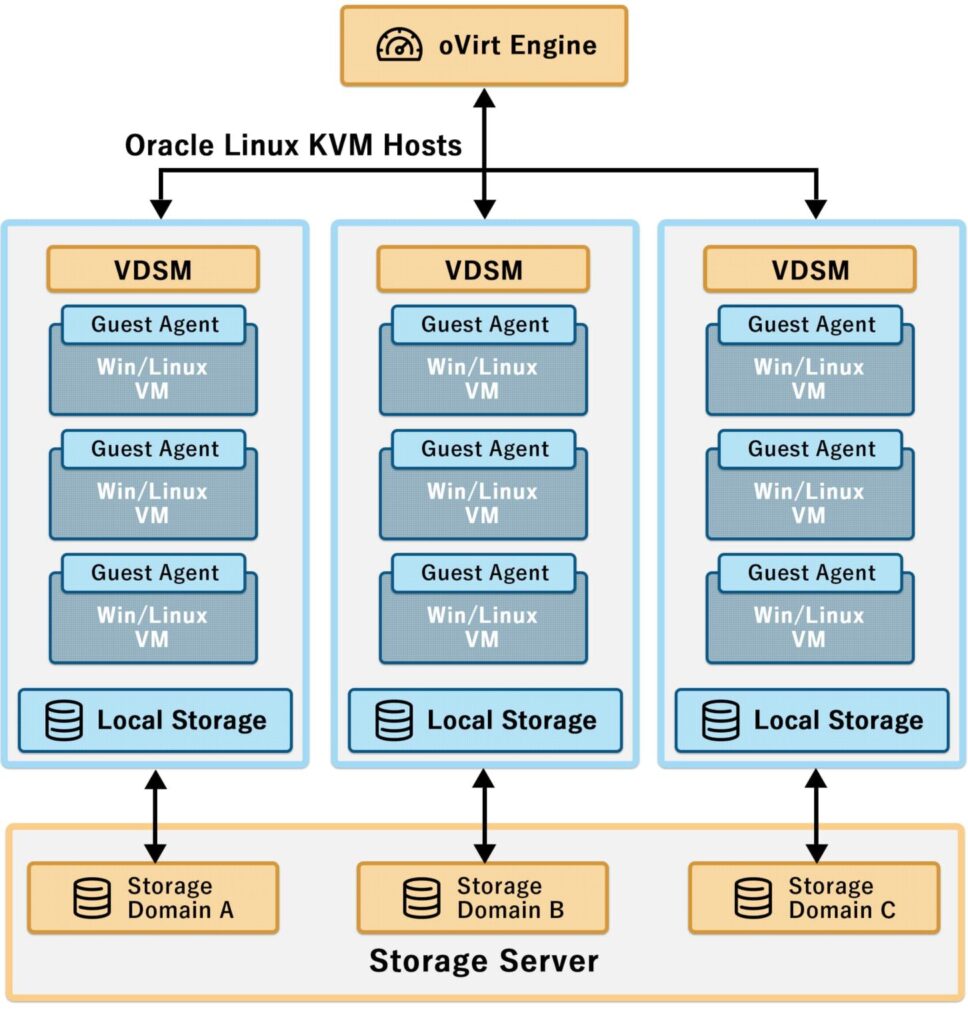
oVirt Engine
A JBoss-based Java application that acts as a web service and provides centralized management of server and desktop virtualization.
Included features
- Management of Oracle Linux KVM hosts
- Create, deploy, start, stop, migrate and monitor virtual machines
- Add and manage logical networks
- Add and manage storage domains and virtual disks
- Configure and manage high availability for clusters, hosts, and virtual machines
- Migrate and edit live virtual machines
- Continuous load balancing on virtual machines based on resource usage and policies
- Monitor all objects in the environment, including virtual machines, hosts, storage, and networks
Oracle Linux KVM host
The Oracle Linux KVM host provides a compute resource for running virtual machines.
Kernel-based Virtual Machine (KVM) and Quick EMUlator (QEMU)
QEMU:
QEMU enables the KVM to become a full hypervisor by emulating the hardware of the virtual machine, such as CPU, memory, network, and disk devices.
KVM:
KVM enables QEMU to execute code on the virtual machine directly on the host CPU. This gives the Guest OS direct access to the host’s resources without making any changes.
Virtual Desktop and Server Manager (VDSM)&libvirt
VDSM service:
It is a host agent that covers all the functions required to manage QKVM hosts, virtual machines, networks, and storage. All communications between the oVirt engine and the KVM host are handled by the VDSM service running on the KVM host.
libvirt daemon:
It runs as a service (libvirtd) on an Oracle Linux KVM host and provides an application programming interface (API) for managing various hypervisors, including Oracle Linux KVM. VDSM uses libvirt to manage the complete lifecycle of virtual machines and their virtual devices on a host and collect statistics about them.
Oracle Linux KVM host
Guest agent
The guest agent runs within the VM and provides information on resource usage to the oVirt engine. Communication between the guest agent and the engine (oVirt engine) is performed via a virtualized serial connection.
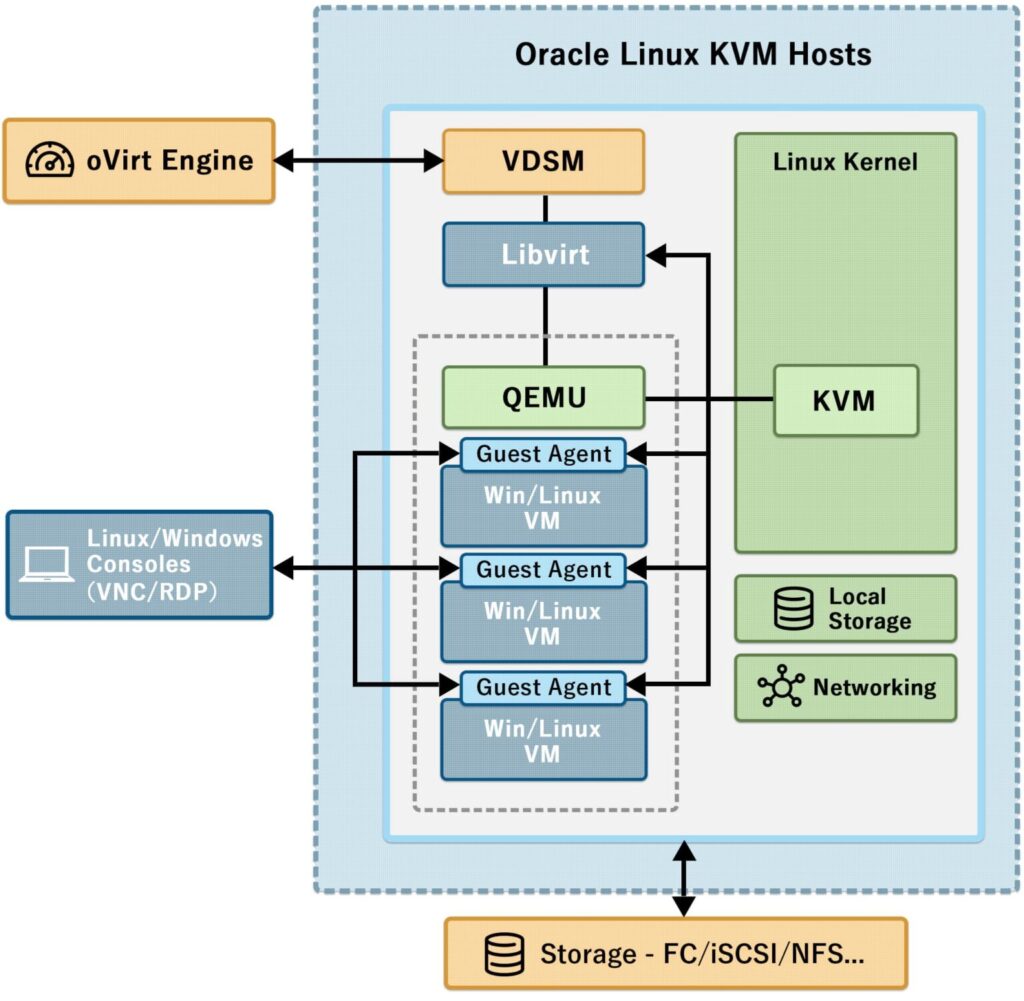
The guest agent provides the following
- Information, notifications and actions between the oVirt engine and the guest
- Guest machine name, guest operating system, and other details (such as associated IP address, installed applications, network and RAM usage) to the oVirt engine
Data warehouses and databases
OLVM has two PostGre databases.
Depending on the engine configuration, if you install the PostgreSQL database called engine and the ovirt-engine-dwh package, a second database called ovirt_engine_history is created.
PostGre database
Engine database:
It stores persistent information about the state of the OLVM environment, as well as its configuration and performance. Historical configuration information and statistical metrics are collected every minute.
Data warehouse database:
It is an administrative history database (ovirt_engine_history) that can be used to retrieve historical configuration information and statistical metrics for data centers, clusters, and hosts in any application.
Management interface
OLVM provides two portals (the “Management Portal” and the “VM Portal”) that can be used to configure and manage the environment. The management portal is a graphical management interface for the oVirt Engine server and allows you to perform the following tasks.
Tasks you can perform
- Create and manage virtual infrastructure (networks, storage domains)
- GInstall and manage hosts
- Create and manage logical entities (data centers, clusters)
- Create and manage virtual machines
- Manage oVirt users and permissions
Basic Oracle Linux Virtualization Manager features
All major Oracle VM 3.4 features have been inherited.
VM management
VM HA policy
Live Migration
RestAPI
Storage, Networking
Virtual Appliances(template)
Status check, alert
Maintenance mode
What’s new in OLVM 4.3.6
- Snap shot
- Role-based access
- Self-hosted engine
- Virt-v2v utility
Oracle Linux KVM and Oracle Linux Virtualization Manager
Solution Overview
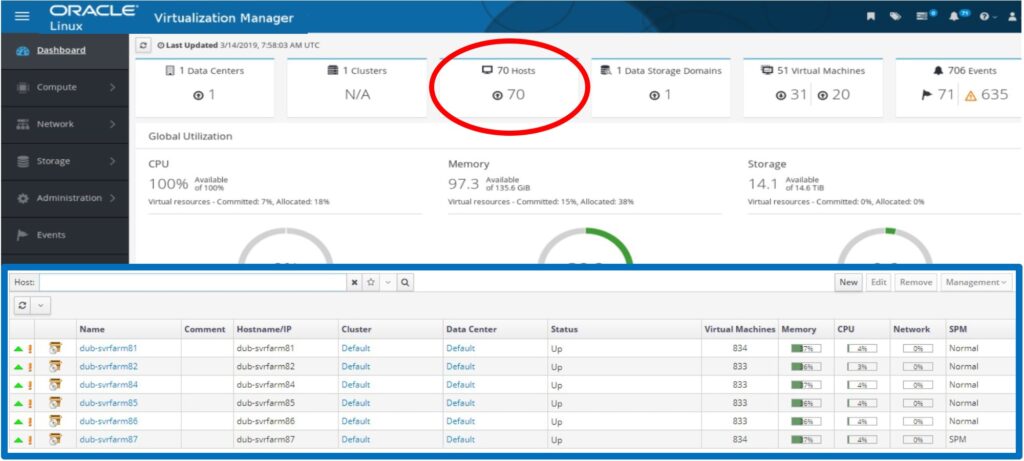
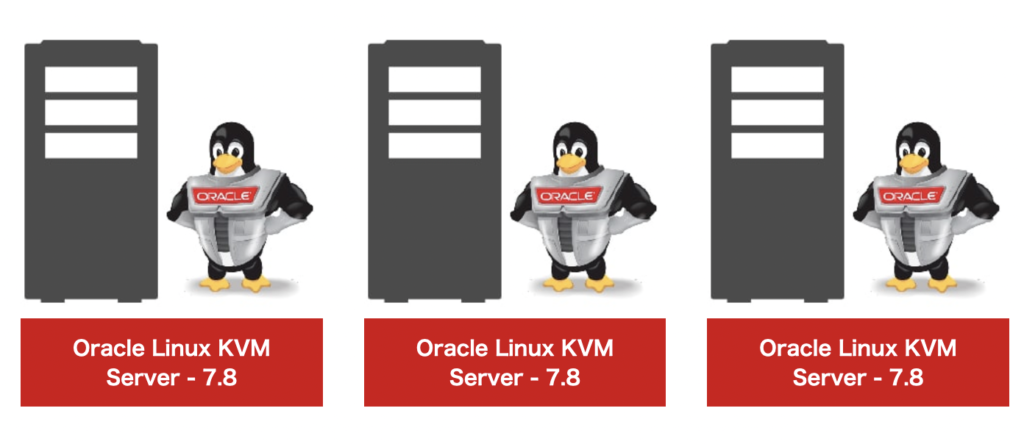
Guest OS Support
- Oracle Linux 5/6/7/8
- RHEL 5/6/7/8
- CentOS 5/6/7/8
- Windows Desktop 7, 8, 10
- Windows Server 2008, 2012, 2016, 2019
Hard partitioning license cost improvements
Oracle software license for hard partitioning
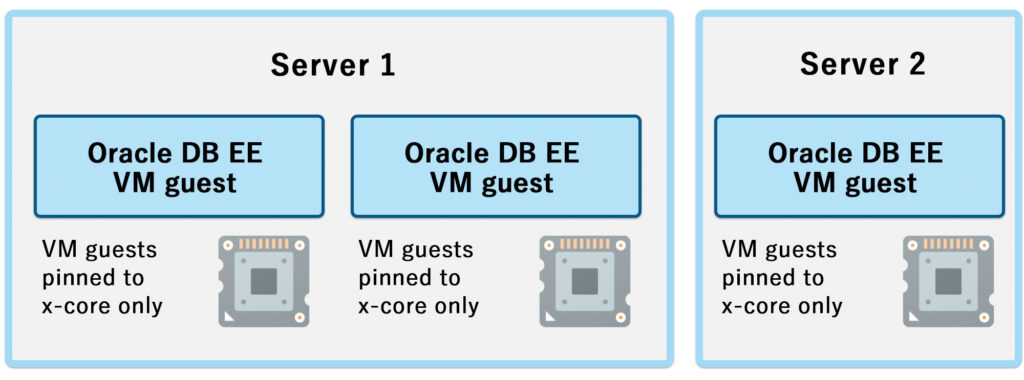
In Oracle Linux KVM, virtual machines can be pinned/hard partitioned to specific physical cores on the server. Once hard partitioned, only the number of physical cores pinned will require a license for a single Oracle Database EE VM guest
Oracle Linux KVM service content
| Service content | Linux Premier |
|---|---|
| Inquiries (unlimited) | ◯ |
| Access to patch/hotfix security alerts | ◯ |
| Access to My Oracle Support | ◯ |
| Access to the Oracle Unbreakable Linux Network | ◯ |
| Hardware operation guarantee | ◯ |
| Backboard hotfixes | ◯ |
| Right to use Oracle Management Pack for Linux | ◯ |